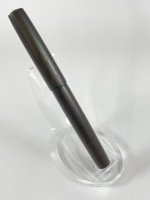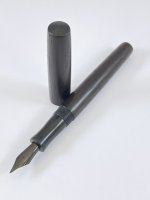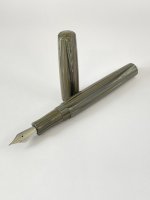NGLJ
Member
For the first time I find myself pondering on how to finish a combination of wood and plastic. By combination I don't mean a mixture. I am trying to make a pen which has plastic end pieces on the barrel and cap for decoration. I am well versed in how to tackle wood and plastic separately, but not where finishing one may affect finishing the other, and vice versa. The only common way that I can think of is to use CA on the wood, and then I only have plastic, but how to do it without "contaminating" the plastic, or do we care. Since some of the plastic is at the open ends of the barrel and cap, how do I finish the end face without causing a problem on the inside where it is threaded? Hope this all makes sense! Or am I making this more complicated than it really is! Perhaps masking is the answer.



